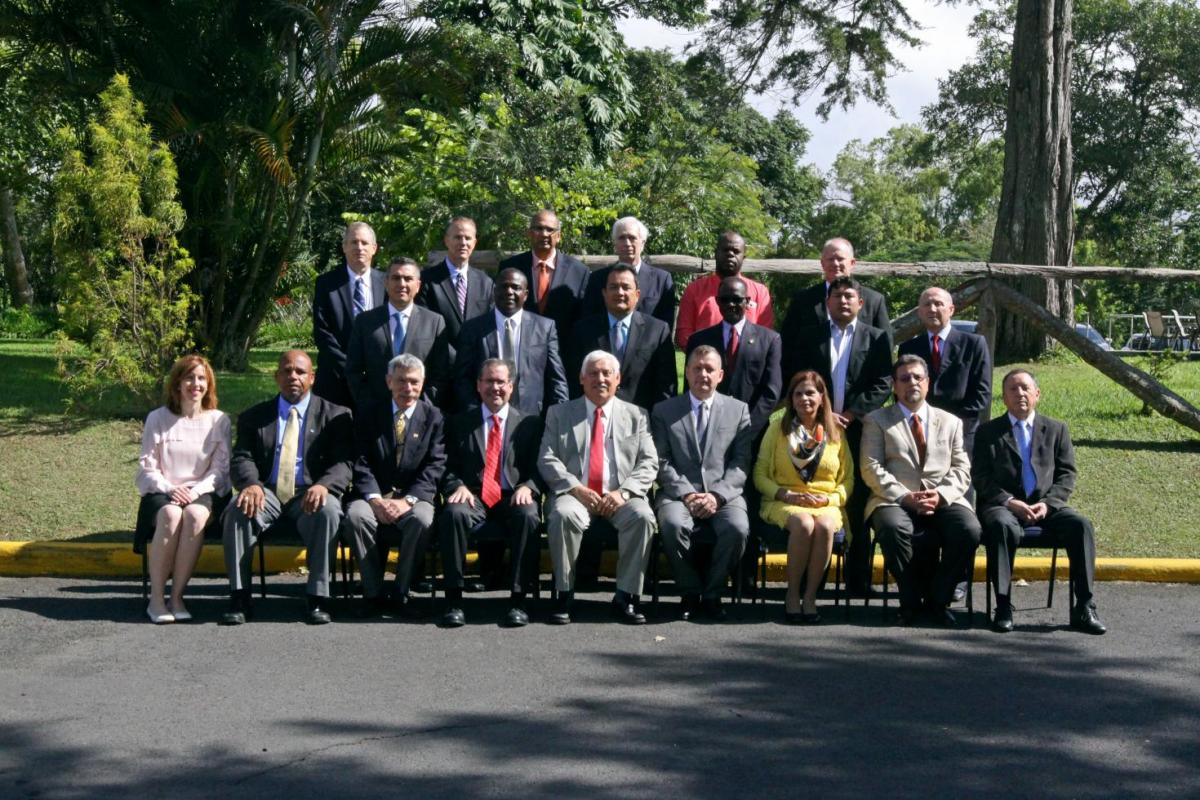The Institute reasserted its commitment to fostering a productive, sustainable, and inclusive agriculture and proposed strategic actions for 2017.

San José, 24 August 2016 (IICA). An investment of almost two million dollars in technical cooperation in the hemisphere is just one of the results that the Inter-American Institute for Cooperation on Agriculture (IICA) achieved in 2015 and so far this year.
The Director General of the Institute, Víctor M. Villalobos, described those achievements when he presented the 2015 Annual Report to the Executive Committee of the institution.
In 2015, IICA carried out significant actions by means of nine multinational projects of the Technical Cooperation Fund (FonTC) and 47 rapid-response actions that focus on responding to health emergencies, fostering institutional strengthening, managing agricultural knowledge, and identifying commercial opportunities. Additionally, IICA implemented its Flagship Projects and executed 190 externally funded projects worth over 95 million dollars.
Agricultural health and food safety, agricultural chains, resilience in agriculture, inclusion, and family farming are priority topics addressed by the Institute in the Americas.
“The support that we have received from IICA has marked a big difference in our agricultural sector. Thanks to the Institute’s contributions, we have been able to develop new industries, such as the production of sweet potato,” stated the representative of the Ministry of Industry, Trade, Agriculture and Fisheries of Jamaica, Shaun Baugh.

IICA currently leads at least 37 initiatives geared toward modernizing the institutional framework of health services, in order to guarantee agricultural health and the safety of agricultural trade. Close to 1500 officials from over 10 countries acquired in-depth knowledge of export requirements to the United States under the Food Safety Modernization Act (FSMA).
Bolivia, Colombia, Chile, Ecuador, Honduras, Nicaragua, Paraguay and Venezuela, among other countries, created differentiated policies on family farming, by means of participatory processes.
Countries in the Northern, Central, Southern, and Caribbean regions of the hemisphere generated assessments and facilitated coordinated mechanisms for drafting plans to foster inclusion in rural territories; this in turn has complemented the Institute’s work with groups of women and youth in the agricultural sectors of the Caribbean and Central American regions, primarily.
“We are grateful to IICA for its collaboration and contributions following the earthquake in Ecuador, especially in the coastal area. Together with the Ministry of Agriculture, the Institute responded to the emergency by providing a post-disaster plan for the poultry, agricultural and fisheries sectors, as well as donations made by Institute personnel,” stated Angel Ramón Vivanco, Deputy Minister of Rural Development of the Ministry of Agriculture, Livestock, Aquaculture and Fisheries of Ecuador.
Capacity-building efforts geared toward making agriculture more resilient encompassed topics such as water resource management, recovery of degraded soils, bioinputs, avian diseases, animal welfare, and coffee leaf rust.
“We would like to highlight IICA’s contributions in relation to HLB (Huanglongbing, a disease that affects citrus fruits), a topic of primary concern in risk management for citrus fruits that are exported from Argentina,” stated Guillermo Bernaudo, Cabinet Chief of the Ministry of Agroindustry of Argentina.
Through its scholarship program for Latin American and Caribbean students, implemented with support from Mexico, IICA enabled over 400 students and 185 students to pursue master’s and doctoral degrees, respectively. Additionally, 2250 specialists from 33 countries benefitted from 28 courses in agriculture, as a result of horizontal cooperation between the Institute and the Mexican government.
In total, IICA has trained 27 thousand persons in key issues such as climate change, innovation, trade, health, public policies, and rural development.
“IICA succeeds in demonstrating that collaboration between different peoples is possible, regardless of any political or ideological differences. We are a very important part of the Inter-American System because we continue to be an entity that emphasizes joint work and cooperation,” stated Villalobos.
Strengthening and restructuring

The financial strengthening and strategic restructuring of the Institute were two other topics of discussion among the authorities.
At the end of the meeting, the participants agreed to continue moving forward with the restructuring process, in order to modernize and strengthen the institution. They also agreed to assess new ways of strengthening technical cooperation and boosting the Institute’s financial capacity.
One of the options for institutional strengthening could stem from an analysis of the model for joint work implemented by other institutions, such as the World Health Organization and the Pan American Health Organization; IICA could follow their example and create partnerships with similar entities. In this way, duplicated efforts in a single area could be avoided, and the Institute could make better use of the resources provided by the Member States.
Villalobos will present this analysis and proposal for institutional strengthening during the first semester of the upcoming year.
Efforts to strengthen the Institute have been undertaken in response to a resolution adopted in 2014 by the Inter-American Board of Agriculture (IABA), IICA’s highest governing body; the resolution highlights the importance of maintaining and improving the Institute’s efficiency and ability to respond to challenges currently faced by agriculture.
“Together with institutions with which we share common objectives, we can identify ways of working together for a common purpose: to better serve agriculture at the hemispheric and global levels,” concluded Villalobos.
Más información: evangelina.beltran@iica.int










